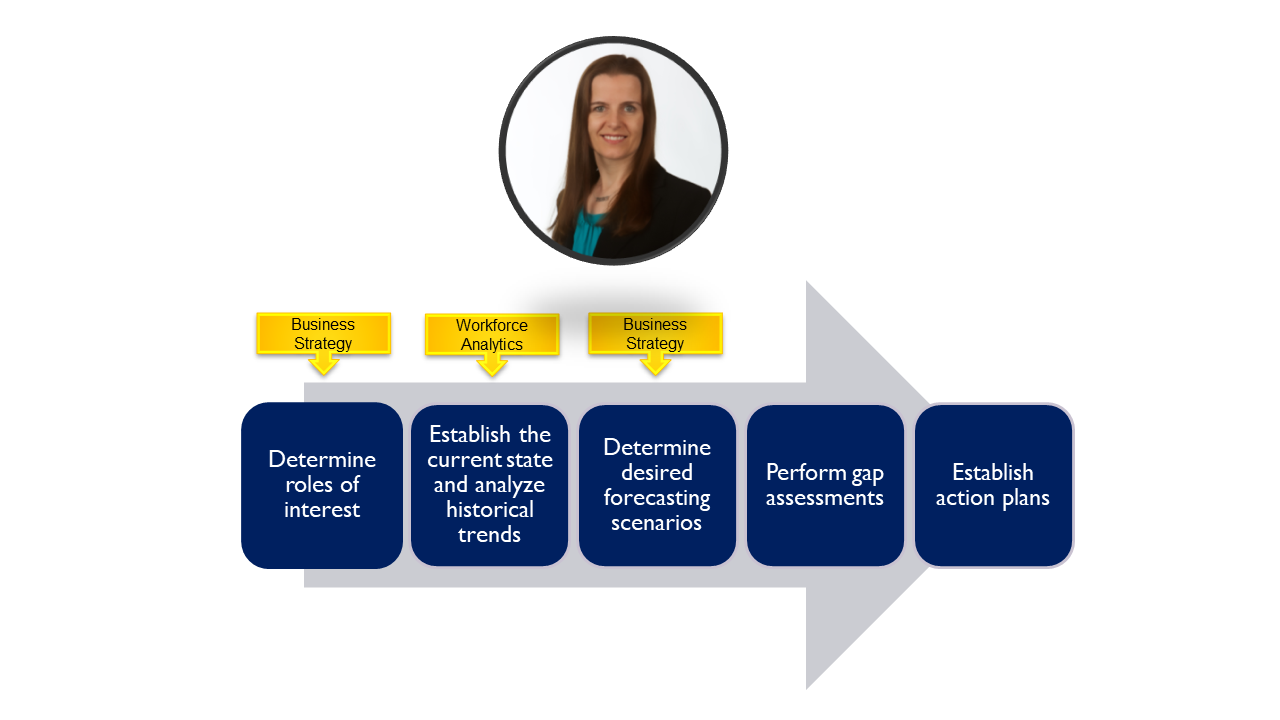How to “Right-Size” Strategically
Over the years, I’ve had time to ponder the various changes I’ve seen in strategic HR. When it comes to topics like workforce planning, I see companies that are “all-in” and dedicated to the topic because they see a huge risk in their workforce and don’t wish to get caught by that risk. On the other end of the spectrum, I see companies who view workforce planning as “too hard” and they choose to rely on their recruitment teams to get them out of whatever talent gap problem they may encounter. In one energy company, the recruitment team told me that their CEO viewed strategic workforce planning to mean just-in-time recruitment. The team was feeling the stress from this view.
For those that attempt completion of workforce plans, the scenarios for these plans are almost always scenarios of growth. But the reality is, it is highly likely that a company will find itself in a reduction scenario at some point in time. It is these reduction scenarios where planning becomes crucial. Here are a few examples of where planning for this scenario becomes useful:
The end of life for a product
The implementation of technology for task automation
The retiring of a category of assets
The dependence on a commodity for your industry
In the first example, your company has a product that is nearing the end of its life. While the product exists, it brings in sales. It is supported by a sales team, customer service personnel and other teams depending on the product type. As the product’s life nears an end, sales drop to a level where the company must determine when it will stop offering that product to the market. When the company does choose to terminate the product, what happens to the people that have been selling and supporting the product? A proactive plan for those people and communicating that plan to those employees is crucial. If employees don’t know that there is a plan for them after the product’s life ends, they will “see the writing on the wall,” envision that they’re about to be downsized, and start to seek employment somewhere else. Without communicating a plan, you will lose the best talent you have in these areas since they will be the first to get offers somewhere else.
The second example is a popular one today. With the rapid pace of change in technology, many employee tasks are being automated. Smart companies will proactively assess the employees that are about to be displaced and set up a training plan to upskill their best and brightest from these areas. Realistically, this is also a situation in which you can remove low performers. I know HR people generally don’t like to hear that, but any good business owner or leader will know that the right thing to do is to keep the workforce filled with as many high performers as possible and minimize the low performers.
The third category is unique to those companies that have aging assets. For example, companies like FedEx and UPS maintain a fleet of aircraft. For each type of aircraft they fly, there is an expert team that is knowledgeable about the mechanics of that aircraft category. When that category of aircraft gets too old, it is slowly replaced with a new category. What do you do with the teams that support the aircraft category being phased out? The same holds true for their fleets of vehicles, which are also comprised of multiple categories.
The fourth example is when you find yourself at the mercy of a commodity. For example, suppose most of your revenue is tied to oil and gas and you suddenly experience a rapid drop in prices. Would you wait until it happens or would you have a plan in place for what happens to the workforce if this scenario becomes active?
You can probably recall the impact of the financial crisis of 2008 on the workforce. Many companies performed mass layoffs because their revenue dropped faster than they could possibly imagine… and not to scare anyone out there, but there’s nothing to prevent this from happening again.
With these scenarios in mind, it becomes incredibly important to be able to plan for what I will call a “logical right-sizing” rather than a reactive panic-stricken one. At this point, I will show you my model for strategic workforce planning so you can understand the context in which I am writing this article. This model has been used in many companies around the world and the book on it, which I will list at the end of the article, has been a highly purchased book since it was created in 2012.
Strategic Workforce Planning Process - Copyright Numerical Insights LLC
Strategic workforce planning can seem overwhelming if you try to take on all of it at once. It is best to select one area of your company for a pilot project or pick one aspect of workforce planning to implement throughout your company. Because of what we witnessed back in 2008 as a result of the financial crisis, there is one aspect of workforce planning that I always recommend. If you do nothing else, make sure you know which job roles are “roles of interest.”
In other literature, you may see “roles of interest” defined as critical or pivotal roles. In my SWP book, I explain the reasons why I don’t use these terms and how it results in biased results. Regardless of what you choose to call this step, you are determining the roles within your company that impact your success the most.
Why do I recommend this? In 2008, companies had to react so quickly that they preformed mass layoffs without any regard for specialized skill sets within certain roles. When the economy began to improve, they found themselves is need of those skill sets once more, but like all specialized talent, it was in short supply.
How is it different if you know the roles of interest? Under headcount reduction situations, a company could look at its list for “roles of interest” and ensure that critical talent is not part of a headcount reduction plan.
So, while many companies plan future workforce strategies based on growth, you can see the importance of planning for reductions, even if those reductions are not company-wide. In this way, and with only a small portion of the workforce planning process, you can mitigate the impact of impending staffing reductions and minimize the loss of key talent. There are more aspects to consider when strategically right-sizing, but I wanted to present one of the simplest considerations.
The below step-by-step guide is available on Amazon or you can purchase directly from our store.




